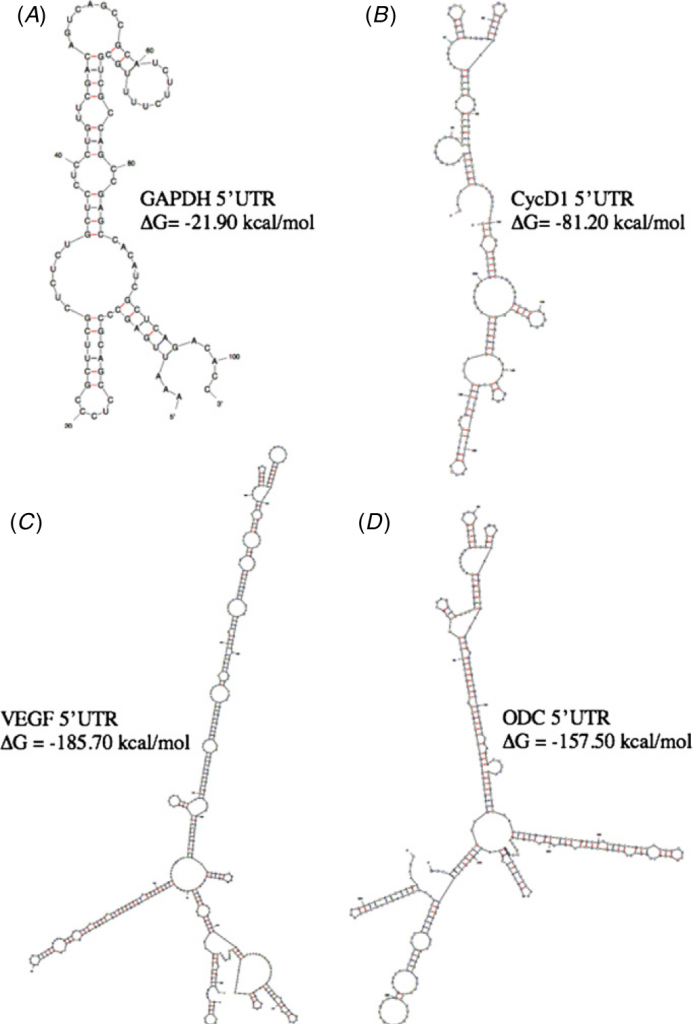“Toulouse may be the mRNA translation capital of France” declared third keynote speaker Jerry Pelletier at the symposium organized by Yvan Martineau, Stéphane Pyronnet et Julie Guillermet-Guibert of the CRCT ( Le Centre de recherche en Cancérologie de Toulouse) within the beautiful and modern Oncopole in Toulouse, France.

This declaration followed a line-up of speakers specialized in the study of the control of mRNA translation with an aim of clinical cancer applications. At least four of the presentations included polysome profiles generated by sedimenting polyribosome-associated mRNAs, used to study both global and specific mRNA translation control.
The two other keynote speakers Robert J. Schneider and Anne E. Willis gave impressive talks on the field of exploiting mRNA translation as a cancer therapy. Willis’ talk, for example, described how a single nucleotide polymorphism in the 5′ UTR of ERCC5 determines sensitivity to platinum-based chemotherapy in diffuse large B-cell lymphoma. The model presented involved cisplatin-induced eIF2-alpha phosphorylation-mediated changes in mRNA translation patterns to regulate expression of proteins involved in the nucleotide excision repair pathway. Willis also described recent work published in Nature as part of a collaboration with Owen J. Sansom, suggesting that mRNA translation elongation, not initiation, is the rate limiting step in Apc-deficient intestinal tumor lesions and that mTOR inhibitors lead to an EEF2K-dependent growth arrest and differentiation of tumor cells. The former members of Nahum Sonenberg’s lab present in the audience (Martineau, Pyronnet, Pelletier, and myself) clearly appreciated the importance of such a statement.

A fairly common theme was the notion that highly structured 5’UTRs are important for the regulation of mRNA translation.
These structured 5’UTRs can take the form of Internal Ribosome Entry Sites (IRES), discovered by Pelletier, RNA G-quadraplexes and other complex secondary structures, like those of cyclin D1, cyclin D3, VEGF, cMYC, Bcl-xL and ODC. While some, including myself, have tried to suggest that such mRNAs could be controlled by mTOR-dependent regulation of eIF4E availability, eIF4E seems to be more important for the short, simple TOP mRNA translation.
The presentations at this symposium, including those of Christian Touriol and Pelletier, demonstrate rather that these highly structured mRNAs seem to be controlled directly by the availability of eIF4A, DEAD box helicases, and their chaperone proteins (e.g. eIF4B). Pelletier’s work on the identification of natural product eIF4A inhibitors carried the audience through the entire process of screening for compounds with activity in a cellular assay for cap-dependent vs. IRES-mediated translation towards target identification and validation with CRISPR/Cas9, optimization of chemical compound production and identification of functional structurally-similar compounds, and initial preclinical testing in animal models. Pelletier, a bench scientist who still does wet lab work himself, made a special point to discuss the role of basic science researchers in translating their research into something that pharmaceutical companies can develop into a therapy. He cited the recent report from AstraZeneca highlighting the reasons for failure in clinical trials (reference: Nature Reviews Drug Discovery 13, 419–431 2014). Among the five features of a strong drug candidate (Right target, Right tissue, Right safety, Right patients, Right commercial potential), Pelletier indicated which aspects of molecule characterization he, as a basic scientist, could be expected to support with in a translational research context.
An interesting moment of Basic Research meets Pharma occurred when researchers from Pierre Fabre hinted that they had tested some of the eIF4A inhibitors in mouse models and observed that the therapeutic window of concentrations between which the maximum tolerated dose and the dose at which they saw reductions in cyclin D1 protein levels was too small. They were a bit reluctant give details of their experimental protocol in the public setting of the symposium, but the discussions they had with Pelletier in private after his talk were likely quite interesting.
As a positive sign for the future of mRNA translation research in Europe, many young researchers gave oral presentations and participated in the lunchtime poster session. Baptiste Panthu presented a hybrid in vitro translation system that combines the power of the rabbit reticulocyte lysate system and the ability to purify RNA-associated proteins from the user’s system of choice. Anne Cammas, a former lab member of Stéphan Vagner’s group, described hnRNPA1’s ability to promote expression of Ron, a receptor tyrosine kinase, via G-quadruplus RNA structure in the Ron mRNA 5’UTR. Cammas’ current lab members (Hervé Prats’ group) also presented a poster on the translational control of p53 protein levels in DNA damage response. Etienne De Clara gave a talk on the use of long noncoding RNAs as biomarkers in acute myeloid leukemia patients with normal cytogenetics. Starting with over 11 thousand expressed lncRNAs, he was able to identify a specific signature using only 19 lncRNAs that could predict NPM1 mutation status.
Marharshi Deb described an interesting phenomenon observed in next generation sequencing datasets: that antisense RNA sequences resulting from transcriptional read-through are present and may alter the expression of the complementary mRNAs.
Finally, Coralie-Hoareau-Aveilla described the role of STAT3-dependent epigenetic silencing of the microRNA, miR-150, in T-lymphomas with gene fusions of the kinase ALK and explained that ectopic expression of miR-150 slows the growth of NPM-ALK positive cells.

Overall the meeting was just the right mix of mRNA translation with a clinical angle appropriate for the cancer center in which it was presented. Whether Toulouse will become the mRNA translation capital of France remains to be determined.
Institut Curie might have something to say about that with their training course coming in March of 2015: Post-Transcriptional Gene Regulation: Mechanisms at the Heart of Networks, with a spectacular line-up of speakers, and where I’ll be participating in the career roundtable to help advise trainees on their career path options.
About the author:
Mark Livingstone currently manages the molecular biology offer for tebu-bio, a pan-European supplier of reagents for laboratory research use. Prior to holding a post-doctoral position at Institut Pasteur in Paris and doing his PhD work in Nahum Sonenberg’s mRNA translation group at McGill University, Mark was one of the original employees at Cell Signaling Technology where he developed many of the original phospho-specific antibodies against proteins (rpS6, 4E-BP1, eIF4E, eIF4B) involved in mRNA translation in collaboration with the experts in the field. European researchers involved in mRNA translation and RNA biology work are encouraged to contact Mark to discuss recent innovations in the fields of RNA biology, RNASeq, Genome Editing, custom oligonucleotide/mRNA synthesis, and RNA biomarker discovery.



